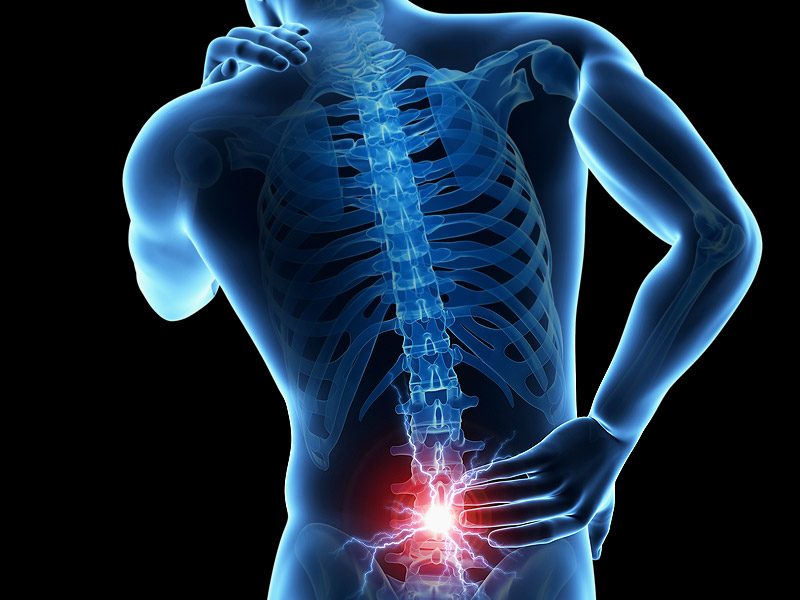Typically, the spinal anatomy in the lumbar spine allows nerves exiting from the spinal cord to transmit signals to the rest of your body. Discs lie between each vertebra, providing a cushion for the vertebra and protecting the nerves as they exit the spine. However, as we age, our discs in our spine may begin to break down and become dehydrated. This may cause them to move towards the spinal cord or the nerves that exit from the spinal cord.
What is Lumbar Spinal Stenosis?
Lumbar spinal stenosis is when the narrowing of the spaces in the spine occurs in the lumbar spine. This can sometimes cause neural foraminal stenosis, in which exiting nerves from the spine become pinched. This compression can cause a shooting pain that radiates from the lower back down to the foot.
If you experience more severe problems, such as loss of bowel or bladder function, be sure to visit an emergency room as soon as possible.
Spinal stenosis and degenerative disc disease are often related to old age, though accidents or heavy lifting can result in disc changes and pinched nerves in younger individuals.
How is Lumbar Spinal Stenosis diagnosed?
During your initial consultation, your physician or healthcare provider may discuss with your medical history and the symptoms that you are experiencing. They may also perform a physical examination to evaluate some of your symptoms.
Your physician will be able to diagnose Lumbar Spinal Stenosis through X-rays, CT scan or MRI, and occasionally an EMG. These tests will give your doctor a detailed look at your spinal cord, discs, and nerves. These will also help exclude other problems that could be causing your pain.
What are the treatment options for Lumbar Spinal Stenosis?
If you are diagnosed with lumbar spinal stenosis, there are many options available for you. Nonsurgical treatments include physical therapy, as well as stretching and massage. Taking over-the-counter nonsteroidal anti-inflammatory drugs (NSAIDs) or Tylenol can also help relieve pain and reduce swelling. Your doctor may also prescribe other medications, such as muscle relaxants or nerve pain medications. Epidural steroid injections may also provide significant relief for many months, and can be repeated as the pain returns.
If these treatment options don’t help reduce your pain, your physician may refer you to an orthopedic or neurosurgeon. Commonly, a spinal decompression and/or fusion surgery is performed, which relieves the pressure on the nerves. However, this option is generally reserved for those that are not responding to conservative management, as it is an invasive surgery that can take time to recover from.
If you are experiencing symptoms of lumbar spinal stenosis, talk to your doctor for proper diagnosis and treatment.




